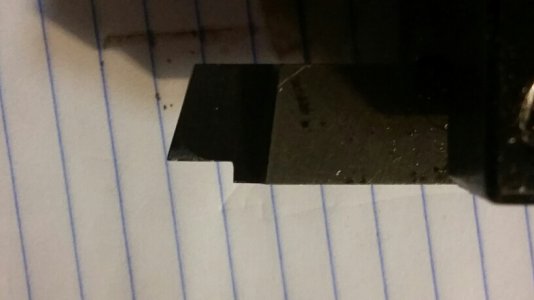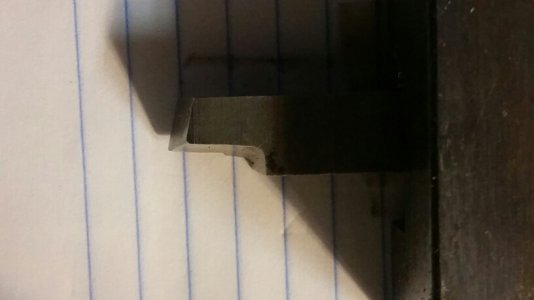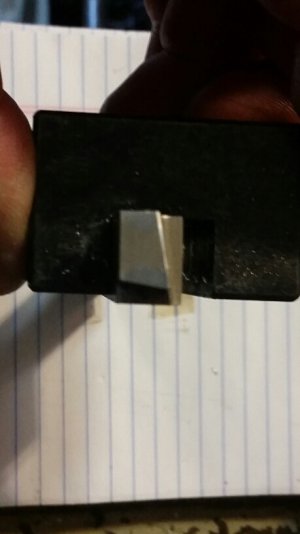I posted this in the gunsmithing forum but haven't gotten any replies so I thought I would ask here as well...
I've finally gotten everything together and done the 2 collar test. I was able to get within .002 - .003 over 6" (unsupported end larger) before I ran out of adjustment on the lathe feet. Actually, screwing the rear tailstock foot all the way down raised that corner a little over an inch but did not change the difference in the collars.
I will say I am not convinced it's a bed twist issue. The surface finish on the unsupported end is a lot rougher than the headstock end. This indicates some flex, somewhere, to me. (I did have to take 3 spring passes to get to a point where the tool traversed the length but did not cut).
The lathe is a Romi/Doall 13x20 w/ BXA QCTP, 1/2" HSS tooling.
The test bar was a length of 2" aluminum.
I've done some gun work in the past but it was always on someone else's machine which I assumed was properly leveled, etc but I never ran a test bar so I couldn't say for sure. Which leads me to my question, how close is close enough?
In thinking back to the gun work I have done in the past, it has always been short sections (threading a muzzle, turning a shoulder for a gas block, etc. For that type work, I can't imaging that .003 over 6" will matter much. Contouring a barrel might be noticable but I doubt I'll be doing much of that given the 20" bed length.
I would like some input from those of you with much more experience. Thoughts and suggestions welcome.
Thanks!
I've finally gotten everything together and done the 2 collar test. I was able to get within .002 - .003 over 6" (unsupported end larger) before I ran out of adjustment on the lathe feet. Actually, screwing the rear tailstock foot all the way down raised that corner a little over an inch but did not change the difference in the collars.
I will say I am not convinced it's a bed twist issue. The surface finish on the unsupported end is a lot rougher than the headstock end. This indicates some flex, somewhere, to me. (I did have to take 3 spring passes to get to a point where the tool traversed the length but did not cut).
The lathe is a Romi/Doall 13x20 w/ BXA QCTP, 1/2" HSS tooling.
The test bar was a length of 2" aluminum.
I've done some gun work in the past but it was always on someone else's machine which I assumed was properly leveled, etc but I never ran a test bar so I couldn't say for sure. Which leads me to my question, how close is close enough?
In thinking back to the gun work I have done in the past, it has always been short sections (threading a muzzle, turning a shoulder for a gas block, etc. For that type work, I can't imaging that .003 over 6" will matter much. Contouring a barrel might be noticable but I doubt I'll be doing much of that given the 20" bed length.
I would like some input from those of you with much more experience. Thoughts and suggestions welcome.
Thanks!




